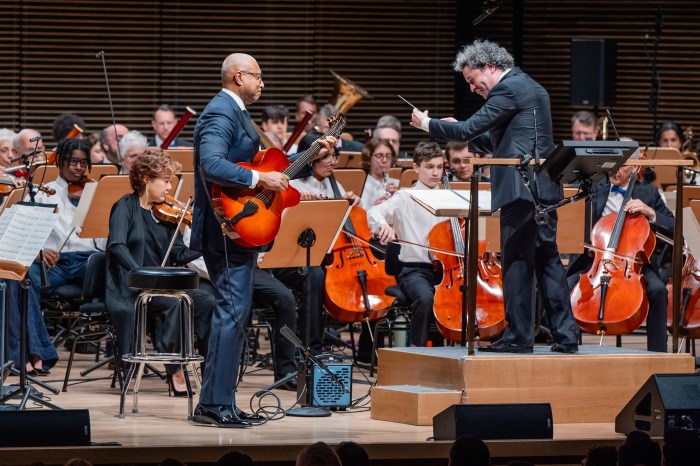By Prem Calvin Prashad
Coinciding with the swelling number of immigrants in Queens is the diversification of the boroughs’ culinary, artistic and recreational scene.
The resurgence of cricket – a sport once played in colonial New York and spread across the globe by the British Empire, is indicative of the changing face of Queens, as immigrants from the British Commonwealth nations play cricket in open lots, for high school teams and in organized competitive amateur leagues.
“Cricket serves as the only sport that ties most of the Indo-Caribbean community in New York City back to their native land,” noted Padma Seemangal, director of youth programs at the Indo Caribbean Alliance in South Richmond Hill.
Cricket is also popular among immigrants from India, Pakistan and Bangladesh as well as the West Indies. In the game of cricket, a batsman attempts to score runs while protecting the “wicket” while the opposing team “bowls” with the intent of striking the wicket and fields any balls that have been hit by the opposing batsman.
The city Parks Department has aggressively expanded its cricket facilities, including the opening of a $650,000 modern cricket field in Baisley Pond Park in Jamaica. There are more than 30 cricket fields in the city, according to the Parks Department, and several more are under construction.
Up until the emergence of baseball, cricket had been a popular American pastime, with tens of thousands of players and an established presence in larger cities, such as Philadelphia and New York as well as college campuses. The first international cricket match was held in 1844 at the former Bloomingdale Park in Manhattan and featured an American and a Canadian club that played in front of an estimated 10,000 spectators.
Cricket remained widely popular in the Northeast until the mid-1800s, until many cricket players took their fielding and pitching talents to baseball, which was embraced by poor and middle-class Americans. Cricket as a pastime was effectively defunct by the First World War, a casualty to wealthy Americans adopting tennis and golf as pastimes.
It was not until 1961 that the United States of America Cricket Association re-established a framework for the United States to compete internationally as well as promote the sport across the country. Today the growth and popularity of the sport is driven through grassroots efforts spearheaded by the USACA, immigrants and international college students from South Asia and the Caribbean.
Competition is fierce in the New York’s Public School Athletic League, where powerhouse teams include two-time champions Long Island City High School and Newcomers High School, also in L.I.C. The PSAL created a cricket league in 2008 that has since grown to six divisions. There are currently 15 Queens high schools in three divisions fielding co-ed cricket teams. There are three other divisions, two split between Brooklyn and a combined Manhattan/Bronx division. The 16th team from Queens, Thomas Edison High School in Jamaica, plays in the Manhattan/Bronx division.
Expansion of the sport through the PSAL will be in conjunction with the USACA, which will provide coach training and technical advice as well as setting up PSAL-style competitions across the country.
While cricket was added to the PSAL in 2008, two new sports — badminton and table tennis — debuted this year. Both sports, heavily popular in East Asia, will be played at schools, including Flushing High School, Townsend Harris and Cardozo High School.
The NYPD, too, recognized the value of cricket as a form of community outreach, forming the NYPD Cricket League in 2008 to connect with South Asian and Caribbean youth. There are 12 teams, divided into the “Stars” and “Legends” Divisions and games in Queens are played at Kissena Park in Flushing. The league is administered by the NYPD Community Affairs Bureau and joins a similar NYPD Soccer league. The 2014 season is currently underway.
Both the PSAL and NYPD leagues use a newer format of cricket, known as Twenty20, which lasts just three hours, compared to matches of up to five days generally played by professionals. The shorter games make competition far more feasible for students and other amateurs as well as accommodating spectators.
“The Sunday matches not only act as a forum for friendly spirited competition but also play an important part in bringing families, friends, and the community at large together,” said Seemangal, explaining the communal aspect of the sport. Cricket is traditionally played on Sunday afternoon in the Caribbean.
“As the Indo-Caribbean community continues to grow in New York City, specifically in Queens, cricket facilities are imperative to keeping both the sport and the traditions existent in the community,” Seemangal concluded.
Currently, the only stadium that is certified for international play is in Lauderhill, Fla. Another certified cricket ground is slated to open this year in Indianapolis. Whether Queens can manage the finances and logistics to serve host to such a facility is debatable, but there is no doubt there will be plenty of fans to fill it.































